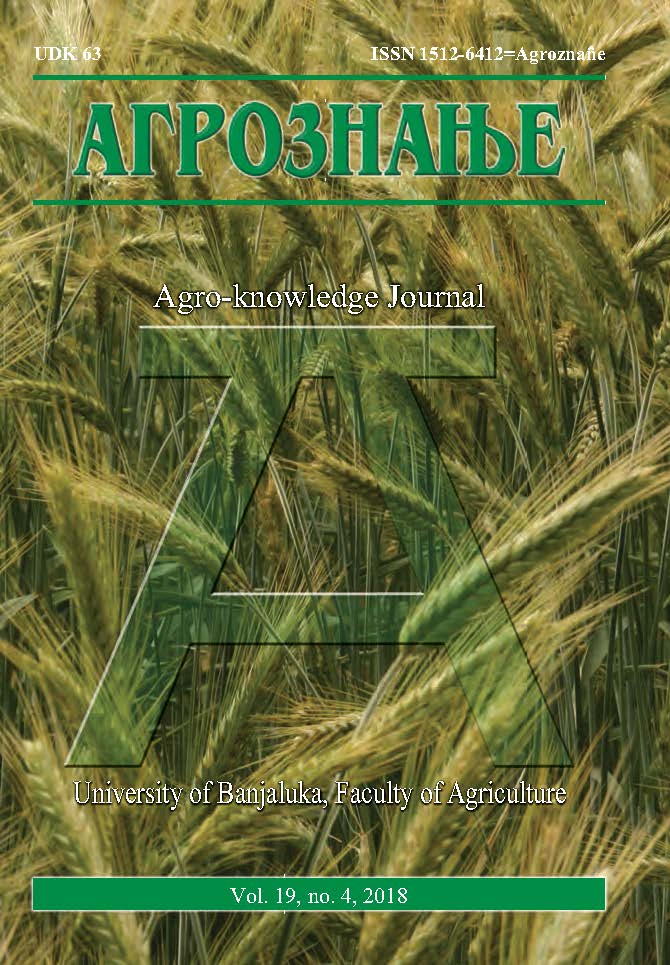Inheritance of Type of Tree Habit in Vilina bukva Beech Population from Čajnice
DOI:
https://doi.org/10.7251/AGREN1804299MAbstract
According to the oral tradition, four to five degrees of kinship back, at the locality of the village of Batočići, the hamlet of Bare, the municipality of Čajnice – Republic of Srpska in BiH, there was an appearance of a tree with atypical sympodial graft in the spiral or alternating position of annual growth with a different tendency of negative heliotropism. This tree reached a height of up to 20 m and dried at the age of about 170 years. According to the oral tradition, after a longer period, between two and three degrees of kinship backward, the appearance of new single beech trees with the same characteristics in the formation of habit was observed. These new trees appeared successively in a relatively narrow space around the first tree, which for this reason was called the "Mother of Fairy Beech". Morphological characteristics of tree habit in this beech population conform with the variety of "tortuous beech" Fagus sylvatica var. – tortuosa, as well partly conforming to the variety of "weeping beech" Fagus sylvatica var. pendula. In this research, the question of inheritance of irregular sympodial branching with a tendency of negative heliotropism in the population of "Fairy Beech from Čajniče" has been raised, regardless of the characterization of the varieties. Thus, in the population of Fairy Beech from Čajniče, which makes about 40 trees in relatively close surroundings, four trees aged over 30 years have been identified in order to determine whether their tree form is reproduced by vegetative cloning and generatively, by seed. The research was conducted in the period from 2014 to 2016 at the Institute for Genetic Resources of the University of Banja Luka. The results show that the form of habit of all four parent trees are conveyed by branching as well as by seed, which proves that there was a mutation of the first tree, i.e. the mother of Fairy Beech from Čajniče, which is transmitted to the offspring.

